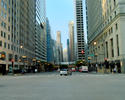Deep-blue cities and states are eager to declare their social-justice credentials. read more »
New York
America After COVID: What Demographics Tell Us
“When there is a general change in conditions, it is as if the entire creation had changed, and the whole world altered.” —Ibn Khaldun, 14th century Arab historian read more »
- Login to post comments
Escape from New York?
Reports continue to mount on the decline of New York City through the pandemic months. In a July 2020 post, we summarized the situation: read more »
- Login to post comments
San Jose: Largest % Migration Loss Outside New Orleans
This article expands on the 2000 to 2019 state net domestic migration data from last week, covering the 110 metropolitan areas with more than 500,000 residents (Note). The big surprise may be that the largest proportional outflow of net domestic migrants, outside Hurricane Katrina ravaged New Orleans was San Jose, the nation’s most affluent metropolitan area and perhaps the wealthiest in the world. In both cases, many more people left in the first 10 years than since 2010. read more »
- Login to post comments
Two Decades of Interstate Migration
America is still a mobile nation. Back in the 2000-2010 decade, 12.9 million people moved interstate, nearly five percent of the total population. In the 2010s the population has been a bit less mobile, with net domestic migration of 11.7 million residents, slightly under four percent. Nonetheless, 11.7 million is a large number. This is nearly equal to the population of Ohio, with only five states being larger read more »
- Login to post comments
Something in New York is Dying
A recent blog post by investor and stand-up comedian James Altucher (mentioned here) arguing that New York is dead forever attracted the hostility of many New Yorkers. Fellow comedian Jerry Seinfeld wrote a New York Times op-ed calling Altucher a “whimpering putz.” Mayor De Blasio, naturally, agrees with Seinfeld. read more »
- Login to post comments
Bicycles: A Refuge for Transit Commuters?
This may come as a surprise, but bicycles provide more 30-minute job access than transit for the average worker in 50 large metropolitan areas (combined). This is evident from data produced by the University of Minnesota Accessibility Laboratory. The 50 metropolitan areas all have more than 1,000,000 population, though do not include Memphis, Grand Rapids or Tucson, the three others of that size. Reports have been produced for job access, by travel time for the average worker in the metropolitan areas. read more »
- Login to post comments
The Twilight of Great American Cities is Here. Can We Stop It?
The dreadful death of George Floyd lit a fire that threatens to burn down America’s cities. Already losing population before the pandemic, our major urban centers have provided ideal kindling for conflagration with massive unemployment, closed businesses and already rising crime rates. read more »
- Login to post comments
COVID Work Trip Reduction Estimates: CSAs with Transit Legacy Cities
America’s elite central business districts have symbolized the ascendency of big cities, epitomized by soaring office towers. But today, due the COVID-19 pandemic, so much office work performed in these CBDs can be done remotely, that their future seems far less towering than in the past. In contrast, less dense areas, notably exurbs, appear to have suffered less loss in their employment patterns. read more »
- Login to post comments
America's Long Suffering Rail Commuters
The long, streaking commuter trains (suburban rail) carrying workers mostly into and out of downtown every day may give the impression of “rapid transit.” However, regardless of the top speeds they reach, the average suburban rail rider spends far more time traveling to work than those using other modes of getting to work (Figure 1). They spend far longer than the majority of commuters, who drive alone. Even in the New York combined statistical area (CSA), with the largest suburban rail network a majority drive to work (Figure 2). read more »






















